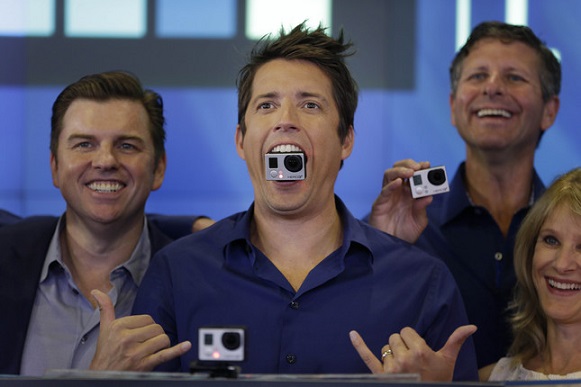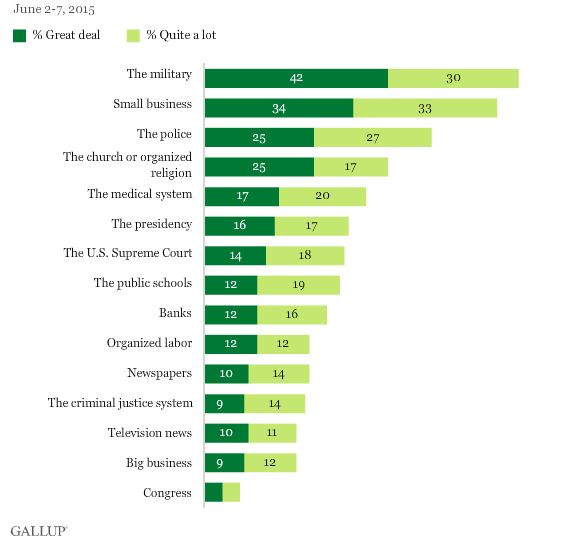
GoPro’s CEO Nick Woodman holds a GoPro camera in his mouth as he celebrates his company’s IPO at the Nasdaq MarketSite in New York, Thursday, June 26, 2014. GoPro, the maker of wearable sports cameras, loved by mountain climbers, divers, surfers and other extreme sports fans, said late Wednesday it sold 17.8 million shares at $24 each in its initial public offering of stock. (AP Photo/Seth Wenig)
We hate to tell you we told you so, but … we told you so (see our post of July 3, 2014). Investors were initially stampeded by the sex appeal and attitude of the surfer dudes who were taking exciting videos of their surfing exploits, but now their motto may have changed from “eat camera” to “eat crow”. Or, to segue to another mixed metaphor, this one-trick pony may have done its one trick already, and all the early adopters have already adopted. We wonder how many earlier buyers are actually continuing to use the GoPro, and how many newer buyers are putting up with the flawed documentation, steep learning curve, and difficulties of using the product to take videos and still pictures they are proud to post or to show their friends.
And what about competition? The GoPro Hero4 Silver costs $400. The Garmin Virb line has models for $200-400. But the $100 Polaroid Cube may be fine for the rest of us. Or the $76 SJCAM SJ4000. Or the $64 entry-level Yi model from Chinese smartphone maker Xiaomi (not as many features as the GoPro Hero4 Silver but some interesting ones such as selfie stick support).


